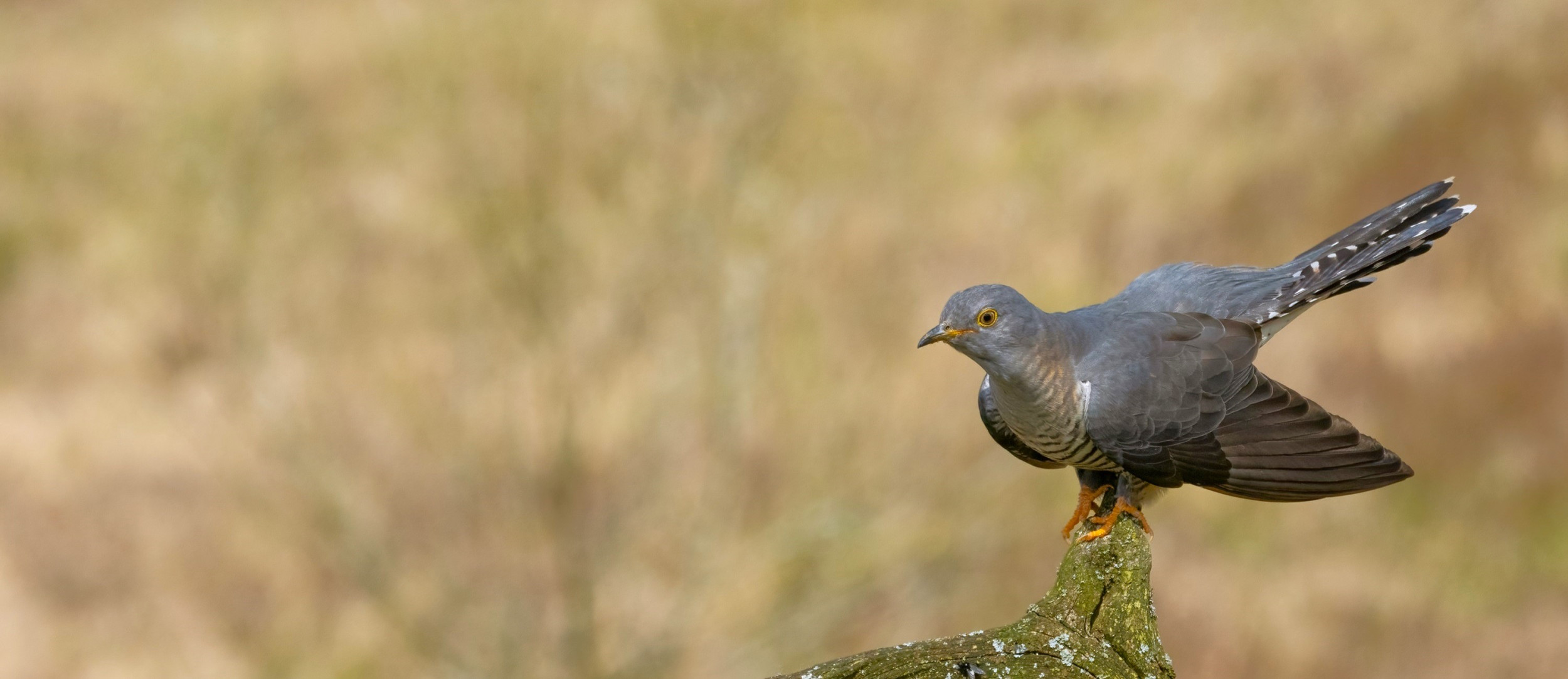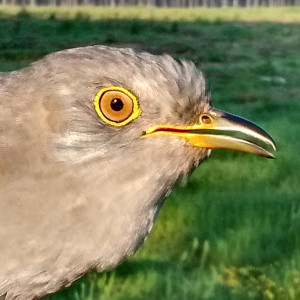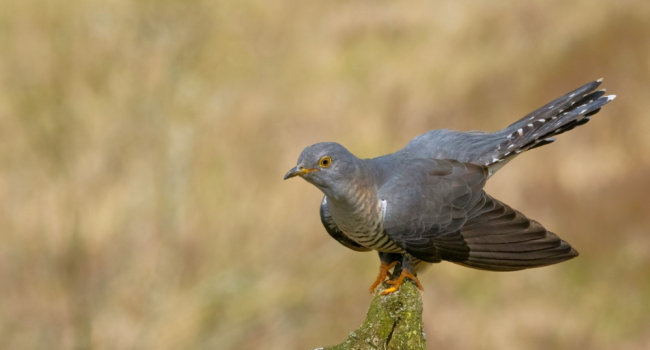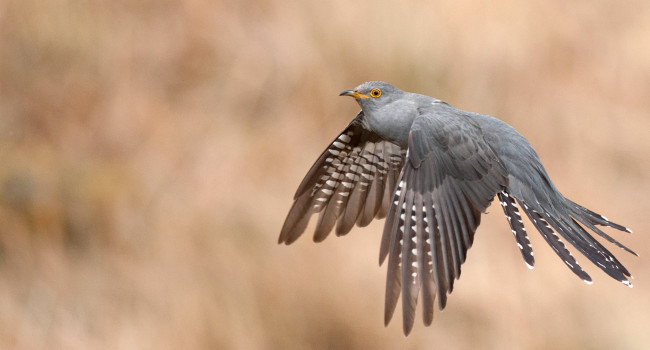About the Cuckoo Project
It’s well known that we have lost over half of our breeding Cuckoos during the last 25 years. Populations of many UK breeding migrant species are declining, but there is little known about the mechanisms of these declines.
Why we started the project
Climate change is causing the timings of the spring season to change and there is evidence that many migrant species are not advancing their arrival times sufficiently to track the earlier spring. There is also some suggestion from previous studies that there are constraints in the migration timing of species wintering in or beyond the humid zone in Africa.
We also know from the BTO/JNCC/RSPB Breeding Bird Survey that Cuckoos are doing better in some areas of the country than in others, with the decline in England (68%) being greater than in Scotland and Wales, but why are they are declining at the rate they are?
Since 2011, we have been tagging and tracking Cuckoos as they migrate between the UK and tropical Africa. This ground-breaking research has helped us gain a much better understanding of all the aspects of the Cuckoo’s annual cycle and helped us clarify and suggest what might be driving the decline.
- Read all about what we have learnt from the project so far.
Seeing the whole picture
Whilst the Cuckoo had been well studied during the breeding season here in the UK, once they head off on migration very little was known about the routes they take or where in Africa they spent the winter months.
Previous to this project, there had only been one recovery of a young bird that was found in mid winter in Cameroon – 82 years ago. If we could identify areas of importance for these birds, then we can study pressures there which could explain the losses of the Cuckoo.
New technology, new opportunities
The recent development of new 5 g tags meant that we were able to track this species. In an effort to learn more about the routes and stop-over sites used, our first five Cuckoos were fitted with satellite-tags in May 2011. See how we caught the Cuckoos. The tags are solar-powered, transmitting for 10 hours and then going into ‘sleep’ mode for 48 hours, to allow the solar panel to recharge the battery. Read more about the tags.
So far all of the cuckoos we have tagged, except for one female – Idemili – have been full-grown males. This is because they are generally larger than females and juveniles and so are able to carry the tags more easily. Once smaller tags are available, we hope that we will be able to tag females and juveniles. We look forward to learning how their migrations differ from the males we have tracked so far.
Information gleaned from the project will help to form conservation strategies and initiate action.
- Read all about what we have learnt from the project so far.
The story so far
Listen to Phil Atkinson and Chris Hewson talk about the rapid decline of cuckoos, why the tracking project is so important, and how it can help us understand more about the decline and potential solutions to reducing or reversing it. Alternatively, you can read all about what we have learnt from the project so far.
Why the project needs to continue
We have learned a lot about the routes taken by our satellite-tagged Cuckoos, and some of the pressures they face whilst on migration. However, the breeding population of Cuckoos in the UK is still rapidly declining, and there is much more to uncover!
The Cuckoo Tracking Project is now the only long-term study of avian Afro-Palearctic migration, making it even more vital for our work to continue.
From 2024, we will be tagging birds near Ullapool – our most north-westerly location yet – to investigate how the survival rates of birds from the uplands compare with that of birds from the lowlands.
We are also hoping to use a different type of tracking tag in the near future, which will give us much finer-scale information about the habitats the Cuckoos use to breed in and restock their energy supplies before setting off for Africa again. This will help us to understand how both breeding habitat and migration route impact the Cuckoo’s survival throughout the year.
- Help us continue this vital research by sponsoring a Cuckoo >
Thank you for your support
Thank you to all the individuals, organisations and companies have joined in to support and sponsor this exciting project. We greatly appreciate all those who have made the project possible, including those who gave advice and volunteers.
This project would also not have been possible without the generous financial support it has received since it started in 2011.
The following organisations have given contributions of over £10,000 to cover some of the project costs.
Additional thanks
The catching team comprised BTO staff: Chris Hewson and Phil Atkinson and volunteer BTO ringers: Paul Noakes and Justin Walker. Kasper Thorup and Mikkel Kristensen from the Natural History Museum of Denmark have kindly advised this project and assisted with the fieldwork. Raymond Klaassen from Lund University advised us when planning the project.
A special thanks also goes to all the land owners who gave us permission to catch on their land and apologies if we didn't catch a Cuckoo - it can be challenging.
Support the project
“I have been following the progress of all the cuckoos, and more specifically AJ whom I sponsored, for many weeks now and I wanted to let you know how much pleasure it has given me. What a feat for such plucky little birds! They are incredible. I will continue to track them all.”
Sponsor a Cuckoo





Share this page